

Guidelines for submitting articles to Roda Golf Resort Today
Hello, and thank you for choosing La Torre Today.com to publicise your organisation’s info or event.
Roda Golf Resort Today is a website set up by Murcia Today specifically for residents of the urbanisation in Southwest Murcia, providing news and information on what’s happening in the local area, which is the largest English-speaking expat area in the Region of Murcia.
When submitting text to be included on Roda Golf Resort Today, please abide by the following guidelines so we can upload your article as swiftly as possible:
Send an email to editor@spaintodayonline.com or contact@murciatoday.com
Attach the information in a Word Document or Google Doc
Include all relevant points, including:
Who is the organisation running the event?
Where is it happening?
When?
How much does it cost?
Is it necessary to book beforehand, or can people just show up on the day?
…but try not to exceed 300 words
Also attach a photo to illustrate your article, no more than 100kb

Jumilla wine route, BSI Bodegas San Isidro
The largest winery in Jumilla offers a wide range of tours and activities on the outskirts of the town
Affiliated to the Jumilla Wine Route, Bodegas San Isidro, more commonly known these days as BSI, is the largest winery in Jumilla, and is located on the outskirts of the town of Jumilla, making it easy for visitors to combine a visit to these premises with another bodega on the same morning, then enjoy a good lunch out in the town itself.
It's a fascinating place to visit, firstly on account of its striking industrial architecture, which is very different from the smaller concerns found in outlying areas, and the tour is very interesting, as visitors are shown not only the different vines and their production techniques, but also wine production on a vast, industrial scale, small-scale production and even cold-press olive oil production all on one site.
From the outside, to the uninitiated at least, the BSI production centre looks more like a concrete manufacturing plant than a winery! Huge container tanks dominate the building, owing their existence to the levels of activity which were reached in the 1960s and 1970s, when as many as 50 million litres were produced per year, and although not all of these tanks are still in use many have been retained (production is now around 7 million bottles per year). In consequence, a tour of the Bodega provides insights into the industrial architecture of half a century ago, as well as the methods by which wine is produced in the 21st century!
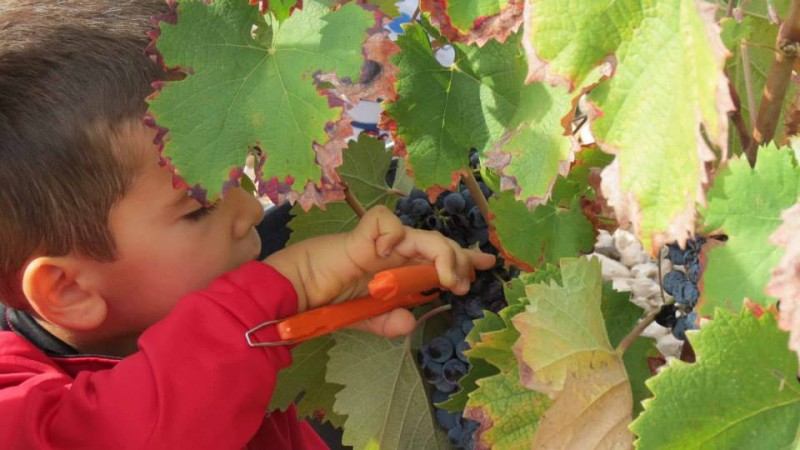
A family day out
Throughout the fascinating tour every effort is made to interest all visitors, be they experts or novices, adults or children, and there are special activities for the younger generation at various times of year. Although the grapes used in the wine-making process are brought to BSI by 400 growers from all over the Jumilla area, there is also a small 2-hectare experimental vineyard alongside the headquarters building, and every year when the picking season starts in late summer there begins a seasonal activity in which children can pick the fruit and make their own grape juice.
This is an enormously popular activity which is carried out under close supervision to avoid any safety concerns, and includes the treading of the grapes prior to sampling the results: as soon as one season ends in November, the first bookings are received for the following year!
In addition, special dramatized tours are organized on occasions such as Halloween, an annual photographic competition celebrates the extraordinary architecture of this building,and BSI is an enthusiastic participant in schemes to hold cultural events including concerts and conferences in wineries: many parts of the Bodega have been specifically adapted for this purpose, and they are included in the standard tour.
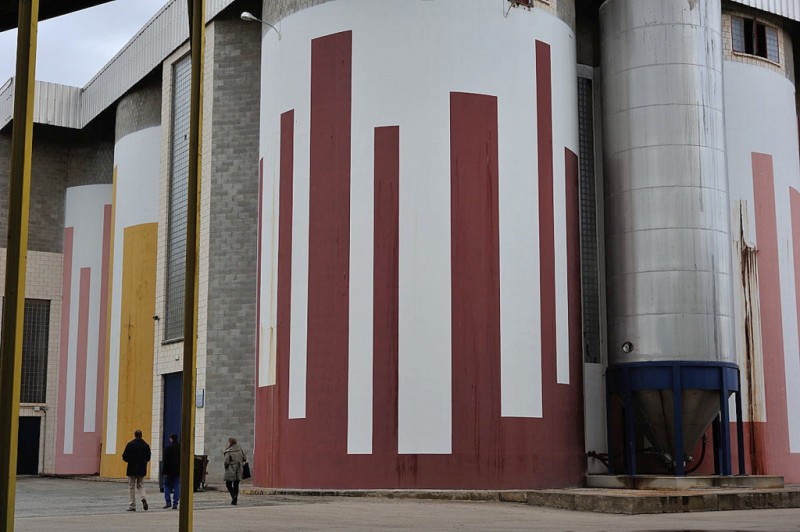
The tour of BSI
The tour begins in the reception area of the company’s headquarters, where a brief introduction is given regarding the history of the Bodega and its main characteristics. Founded in 1934, the cooperative soon grew to the huge concern it is today, and much of its prestige comes from the fact that it can boast the largest production of grapes from Monastrell European Root (Pie Franco) vines in the world.
In order to understand the significance of this, it is necessary to delve into a fascinating episode in the history of wine production in Europe which began in the 19th century. In 1863 an insect called Phylloxera was accidentally imported into Europe from America, first arriving in London, and began to spread throughout the Old Continent, devastating vineyards as it went. By 1868 Phylloxera had been found in a vineyard in Bordeaux, and the plague reached Portugal in 1871, Germany in 1874, Italy in 1879 and Spain in 1878. No pesticides could halt the pest, whose larvae attack vine roots before the fully grown insect eats the leaves.
However, it was eventually discovered that American vine roots were resistant to Phylloxera, and after experiments to graft American roots onto European plants proved effective the technique was adopted almost everywhere in Europe.
However, in a few areas of Spain, where vines were grown in calcareous soils, Phylloxera was unable to penetrate the surface and attack the roots, and in these areas the grafting process was not necessary. Jumilla was one of these areas, and as a result the old “European Root” variety of the Monastrell grape survived: due to this, today BSI produces wine from grapes grown on Monastrell “Pie Franco” vines, some of which are well over 100 years old.
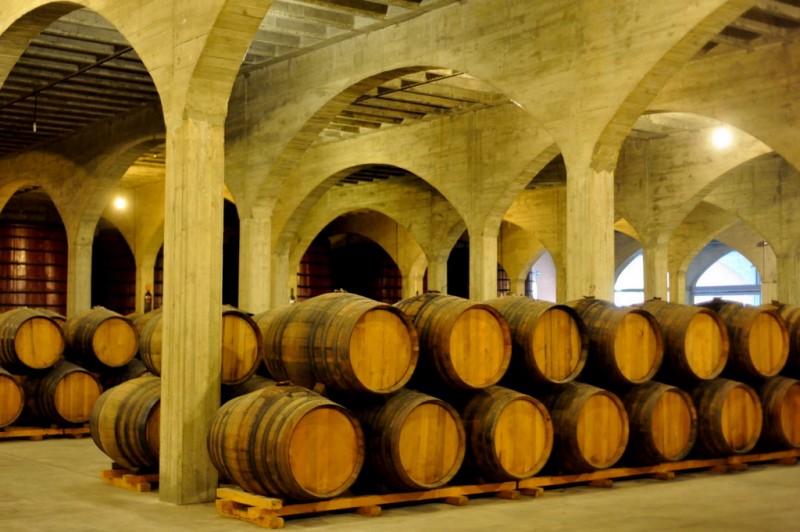
The resulting wine is sold under the “Gémina” label, but protecting the vines is an expensive process. Agriculturalists could easily be tempted to dispose of their old vines in order to gain a greater yield from younger plants, and to dissuade them from doing so BSI pays farmers 300€ per year per vine just to maintain the plants!
After this introduction, the tour moves outside to the experimental vineyard, where visitors can learn about not only the different grapes grown in the Bullas D.O, but also the specific cultivation techniques for growing the different varieties of vine.
From here, the tours move into the massive production area, which is dominated both inside and outside by storage tanks with capacities of up to a million litres. The previous 2-million-litre tanks have now been dismantled, but those which remain are still impressive enough!
These vast concrete tanks were constructed in the second half of the 20th century, and the sheer scale of the operation seems to place it more on the level of a civil engineering project than a wine co-operative: only in the relatively small area devoted to the production of Gémina wine, which uses small-scale steel tanks, is there any semblance of the artisan origins of winemaking!
The design, colours and marking system is not only intensely practical, but is also a visual feast for photographers and artists, the strong shapes, angles and pointed use of colour making this Bodega stand out from many others for all the right reasons.
Part of the bodega is allocated to major international clients, who blend their own wines at the bodega and store hundreds of thousands of litres of their own-brand wines from which they draw down stock as required. These clients include major supermarket chains in both the UK (Sainsbury's) and Spain; here in Spain Genus and Sabatacha are both sold by the Mercadona chain (both good wines and well worth trying!)
Lucky visitors may then receive a brief visit to the olive oil press if they happen to be at BSI when oil is being made, an area where the smell is overwhelming and the air tastes of sweet, freshly harvested olives as the presses extract oil from them. Ecological and Extra Virgen oils are both available from the onsite shop.
The olives grown most widely for BSI are Picual, Cuquillo, Arbequina, Manzanilla and Cornicabra, BSI producing foir premium products; Premium is a blend of five varieties, Ecológico is made using only green cultivation techniques and without the use of chemicals, 100% Arbequino is a smooth, aromatic oil, perfect for all types of Mediterranean dishes, and Olivos Centenarios is made using only the fruit from the older "centenario" or 100-year-old trees: this gives it a more intense flavour.
From here, the tour moves on to the aging area of the BSI plant.
Again, the first word that springs to mind here is “vast”, with row upon row of huge barrels stretching almost as far as the eye can see. Parts of this cellar have been converted into a museum, featuring artifacts and heirlooms donated by the grape-growers who form part of the cooperative, and some of the huge storage barrels have been opened up and converted into meeting rooms and even a stage for concerts.
From here the tour returns to the reception area, which affords an opportunity to taste the wines of BSI and to purchase bottles at winery prices.
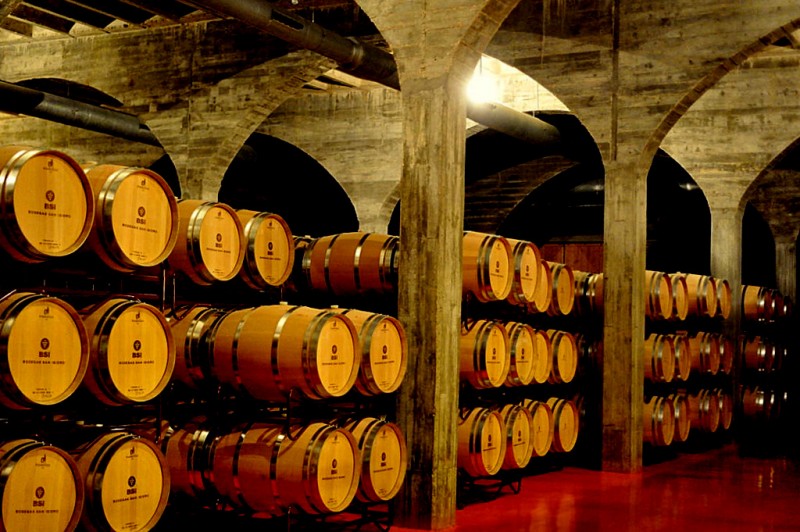
Vineyards
Bodegas San Isidro receives grapes from over 3,500 hectares of vineyards, some of them organic, and the most dominant strain of grape, accounting for around 80% of production, is the Monastrell. However, the Syrah, Petit Verdot, Merlot and Tempranillo varieties are also represented, and for white wines the preferred types are Airén and Sauvignon Blanc.
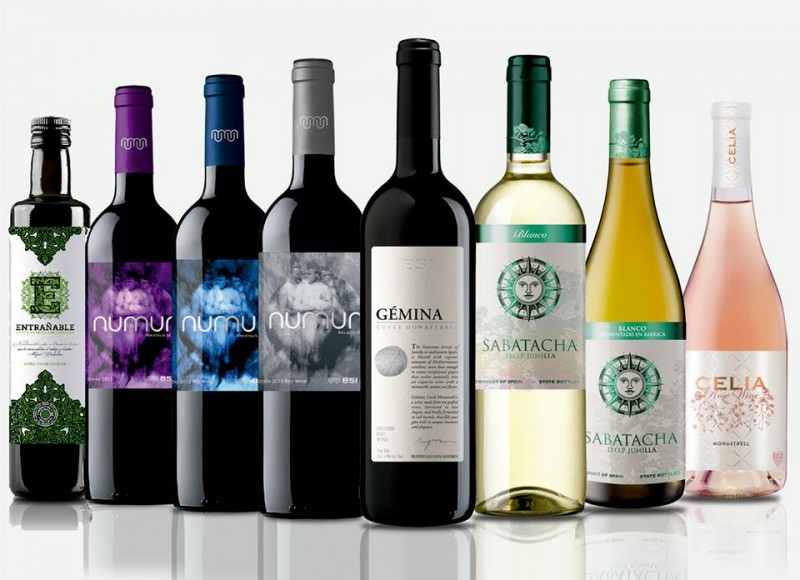
The wines and olive oils of BSI
The wines produced by Bodegas San Isidro are generally grouped into ranges, each with its own brand name and label, and each containing numerous varieties.
Gémina
This is the wine produced from the Pie Franco vines which survived the Phylloxera plague of the late 19th century in Europe (and their descendants), and is undoubtedly the brightest star in the firmament of BSI. Only around 20,000 bottles are produced every year, and the desire to maintain old traditions is reflected in the name “Gémina”, which was how the Romans referred to the town of Jumilla.
Click: Gémina Premium Reserva
Click: Gémina Cuvée
Click: Gémina Monastrell
Click: Gémina Finca la Cabra
Numun
The name of the Numun range is derived from the English “new moon”, reflecting the fact that the wine is produced from grapes which are picked at night. In vineyards located at 600 metres above sea level this means that they are harvested at a temperature of only around 14 degrees, and in consequence the freshness of the fruit is better preserved as it is taken for processing at the production facility.
Click: Numun Monastrell
Click: Numun Syrah
Click: Numun Selección
Click: Numun Organic
Sabatacha
The name of this popular wine comes from a story concerning King Juan Carlos I of Spain, who completed his military training at the Academia General del Aire in San Javier, in the Region of Murcia. Popular legend has it that every time a period of leave was about to start Juan Carlos let his friends know with his “war-cry” of “Sabatacha”, which was code for “SÁBAdo TArde CHAteo” (roughly translatable as Saturday evening drinking). Another version has it that the last word was “chicas”...
Nowadays, however, Sabatacha is synonymous with quality wine, due to the efforts of BSI, and the range includes red, white and rosé varieties using various different strains of grape. This wine is widely available via Mercadona and other retail sources.
Click: Sabatacha Reserva
Click: Sabatacha Crianza
Click: Sabatacha Monastrell
Click: Sabatacha without sulphites
Click: Sabatacha Syrah
Click: Sabatacha Petit Verdot
Click: Sabatacha white fermented in barrels (made using an Airén grape)
Click: Sabatacha white (made using 100% Verdejo)
Genus
BSI’s Genus wines combine Monastrell and Syrah grapes, stored in oak barrels to complete the two distinctive products.
Click: Genus Monastrell Syrah
Click: Genus Roble Monastrell
Lácrima Christi
Lacrima Christi is a sweet dessert wine produced using 100% Monastrell grapes. Only the last grapes to be picked are used in production, as they are riper and sweeter, and as a result no sugar has to be added. This wine is aged in oak for ten years, giving a deep, profound flavour.
Click: Lácrima Christi
Casa Alta
A light young red table wine.
Click: Casa Alta
Note: BSI also produce the Carta Roja red wine which is sold in the UK by Sainsbury’s.
Celia Rosé: a young, salmon-coloured rosé.
Sangría Zambra: a bag-in-box presentation of sangria, mixing red wine with citrus fruit juice.
Entrañable olive oil
BSI also produce four olive oils, a secondary product which is a logical derivation from the fact that traditionally those who grew vines in the countryside of Jumilla often also had olive trees on their land.
Nowadays the “Entrañable” oils are produced using not only olives from Jumilla but also others from Abanilla, Puerto Lumbreras, Cieza and Yecla, and the varieties of olive included are Picual, Cuquillo, Arbequina, Manzanilla and Cornicabra.
All four BSI olive oils – Aceite Entrañable Premium, Aceite Entrañable Ecológico, Aceite Entrañable Arbequina and Aceite Entrañable Olivos Centenarios – are of Extra Virgin quality and are very reasonably priced!
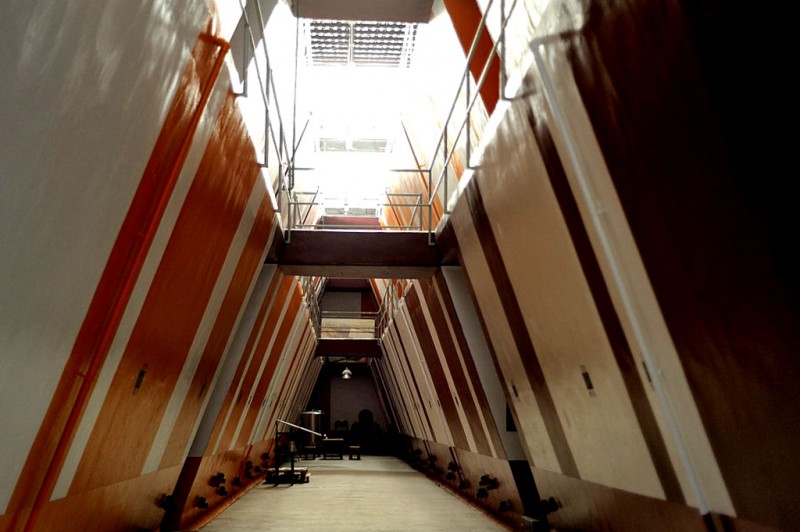
How to book visits
Standard tours of the BSI winery in Jumilla are offered every day of the week, but prior booking is strongly recommended, especially for those who require the tour in English.
The winery is open to the public on weekdays from 9.00 to 14.00 and 16.00 to 19.00, and at weekends and on public holidays from 10.00 to 14.00. Tours are held on weekdays from 11.00 to 13.00 but additional visits can be organised. Reservations and enquiries by telephone on 968 780 700 or by email at enoturismo@bsi.es
Range of visits and activities
Experiencia BSI: visit to the winery and the museum, tasting of 3 wines and premium olive oil, accompanied by a typical Jumilla tapa. Price 10 euros per head (minimum two people).
Visita Entrañable: visit to the olive oil press and tasting of three oils. Price 10 euros per head (minimum two people).
Experiencia Crianzas: visit to the winery and the museum, tasting of crianza wine and olive oils, accompanied by a typical Jumilla tapa. Price 16 euros per head (minimum two people).
La Trilogía Premium: visit to the winery and the museum, tasting of 3 Gémini Finca wines tasting of premium olive oils, accompanied by cheese platter and cold meat specialities. Price 45 euros per head (groups of between 4 and 10 people. This activity takes place in the "Espacio Monastrell".
Cursos de Cata: wine tasting classes for beginner, intermediate and advanced levels (minimum 15 people).
Vendimia en Familia: during the picking season visitors are invited to pick and tread their own grapes, after which they can enjoy a traditional grape-pickers' meal, a visit to the winery and children's activities. Also included are the tastings of two wines and one olive oil. Price 18 euros (adults) or 6 euros (under 16s). Maximum group size 20 adults + 20 children.
Yoga entre barricas: 8 yoga sessions themed on the wines of BSI, each followed by a tasting and a tapa.
Música entre Vinos (MEV): BSI takes part in the annual season of open-air evening concerts and dinner at wineries assocaited with the Ruta del Vino de Jumilla.
Noche del Miedo: A Halloween event, including dinner.
Note: all visits can be extended to include lunch or dinner provided by the onsite catering facilities, although this option is available only for groups of at least 15 people.
How to find Bodegas San Isidro
Given the size of the Bodegas San Isidro winery, it is actually hard to miss it as visitors approach Jumilla from the south on the N-344 road. After taking the “Avenida de Murcia” which leads in a straight line into the town centre, look out for the winery on the left-hand side after approximately 500 metres. Ample parking is provided inside the winery’s perimeter fence.
For more information about visiting Jumilla, including what's on, local news and all of the bodegas on the Jumilla wine route, visit the home page of Jumilla Today.
